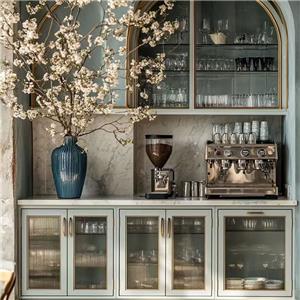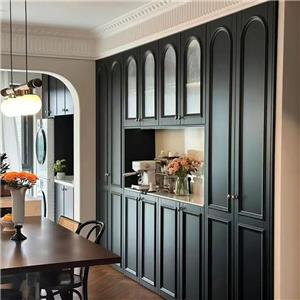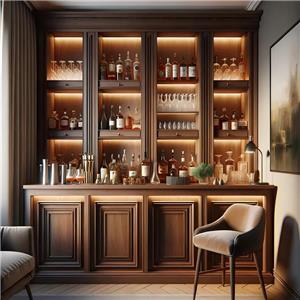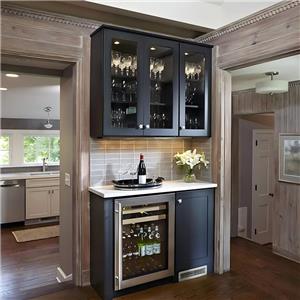Which part of the kitchen cabinet is most likely to break?
In the process of kitchen decoration, kitchen cabinets are undoubtedly one of the most important components. They not only provide storage space, but also occupy a prominent position in kitchen design. As time goes by, the frequency of kitchen use is getting higher and higher. Whether the kitchen cabinets need to be replaced, which parts are prone to damage, and how to extend their service life are often troubled by housewives, homeowners and designers.
There is no fixed standard for the replacement cycle of kitchen cupboards. It usually depends on many factors such as the material, frequency of use, maintenance and decoration style of the kitchen cabinets.
Many people often ignore the maintenance and care of kitchen cabinets when decorating the kitchen. When the kitchen cabinets are aged, worn or otherwise damaged, people often fall into the dilemma of choosing to replace or repair. Replacing kitchen cupboards may be a considerable expense, but if properly maintained, kitchen cabinets can maintain a longer service life.
So, how do we judge when to replace kitchen cupboards? Which parts are prone to damage, and what practices can extend the service life of kitchen cabinets? This article will explore the service life of kitchen cupboards, common damaged parts, when to replace kitchen cupboards, and how to maintain them, to help you extend the use time of kitchen cabinets and avoid unnecessary expenses.
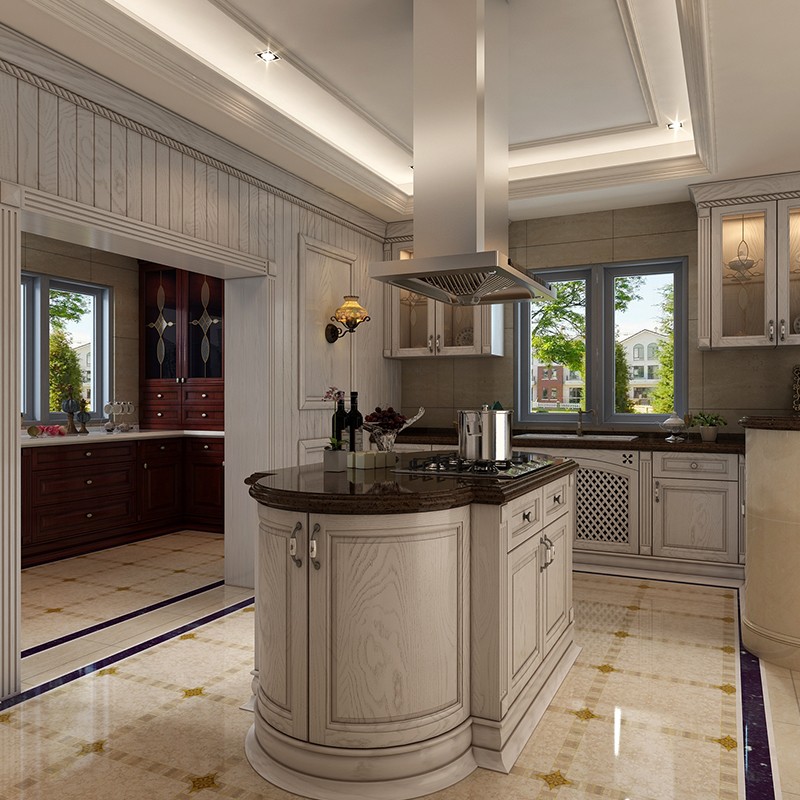
The lifespan of kitchen cabinets: When is the right time to replace them?
The lifespan of kitchen cabinets usually depends on several important factors, including the material, installation quality, frequency of use, and maintenance. A high-quality kitchen cabinet can usually last 10 to 15 years or even longer under normal use. However, if the material is poor or if proper maintenance is not carried out for a long time, the lifespan of the kitchen cabinet may be greatly shortened.
1. The impact of material:
The material of the kitchen cabinet determines its durability. Different materials have different lifespans:
● Solid wood kitchen cupboards: Solid wood kitchen cabinets can last more than 20 years if they are carefully maintained. Solid wood kitchen cabinets have excellent strength and damage resistance due to the characteristics of natural materials, and their appearance will gradually become more textured over time, making them suitable for long-term use.
● Particleboard/Medium Density Fiberboard (MDF) kitchen cabinets: These kitchen cupboards are usually cheaper than solid wood kitchen cabinets, but they are also relatively fragile. If not properly maintained, especially in humid environments or frequent impacts, the service life is usually between 8 and 12 years.
● Stainless steel kitchen cabinets: Stainless steel kitchen cabinets are particularly suitable for high temperature and high humidity environments in the kitchen due to their sturdiness, durability and waterproof properties. With proper maintenance, the service life of stainless steel kitchen cabinets can also exceed 15 years, and they are relatively easy to clean and maintain.
2. Frequency of use:
If you cook frequently, use the kitchen every day, and the kitchen space is small and the air is humid, then the loss of kitchen cupboards will accelerate. Common kitchen pollution sources such as oil smoke, water vapor, food residues, etc. will affect the durability of kitchen cabinets. In this case, the kitchen cupboards may need to be replaced within 8 to 10 years. If the kitchen is used less frequently, the life of the kitchen cupboards will be relatively long.
3. Maintenance:
The service life of properly maintained kitchen cabinets will be greatly extended. Routine cleaning, degreasing, regular inspection of hardware such as hinges and slides for looseness, and inspection of whether the cabinet surface is affected by water vapor or temperature can effectively delay the aging process of kitchen cabinets. Especially in humid areas with large temperature differences, keeping kitchen cabinets dry and ventilated is the key to extending the service life.
4. Style and design:
Traditional kitchen cabinet styles and designs are usually more durable and have classic elements that stand the test of time. Although modern kitchen cabinets are stylish in design, they may be affected by factors such as moisture and oil smoke due to different materials and processes, resulting in a shorter lifespan. In addition, if the kitchen decoration style changes significantly, you may consider replacing the kitchen cupboards in the entire kitchen to ensure that the new design matches the old equipment.

Which parts of the kitchen cabinet are most vulnerable to damage?
Although the overall design and structure of the kitchen cupboard are generally strong, some parts are prone to problems due to long-term use and friction. Knowing these vulnerable parts can help us take measures to repair or replace them as soon as possible to avoid affecting the kitchen experience.
1. Door panels:
The door panels of the kitchen cupboards are the most vulnerable parts, especially when they are opened frequently. Over time, the hinges of the door panels may loosen, the door panels may deform, and even scratches and cracks may appear. Especially for solid wood kitchen cupboards, the door panels may expand or crack due to moisture or temperature changes.
● How to maintain: Regularly check the tightness of the door panel hinges to ensure that the door panels open and close normally. Avoid placing wet items on the cabinet door for a long time and keep the door panel dry.
2. Pull-out baskets and drawers:
Pull-out baskets and drawers are the most commonly used storage space in the kitchen. They carry various kitchen utensils and are easily affected by heavy objects and friction. As the frequency of use increases, the drawer slides and the pull-out basket tracks may become stuck, broken or deformed, affecting their normal use.
● How to maintain: Regularly clean the debris in the drawers and pull-out baskets to avoid excessive accumulation of heavy objects. Check whether the drawer slides and pull-out basket tracks are loose and adjust them in time.
3. Cabinet bottom and side panels:
The bottom and side panels of the kitchen cupboards are often affected by the humid environment, especially in the kitchen cabinets around the dishwashing area and the stove. Long-term accumulation of water vapor may cause the bottom and side panels to deform or even mold.
● How to maintain: Keep the kitchen well ventilated to avoid water vapor from being retained in the cabinet for a long time. Regularly check whether there are water stains on the bottom of the cabinet. If there are, wipe them clean in time. If necessary, you can use a waterproof spray to treat the bottom panel.
4. Material interface:
Many kitchen cupboards are made of different materials (such as wood, metal, glass, etc.). Due to frequent use, the joints are easily eroded by friction, collision or water vapor, causing the joints to loosen or rot.
● How to maintain: Be careful to avoid strong friction on the joints when cleaning, and regularly check whether the joints are loose or falling off. If damaged, repair them with glue or sealant in time.
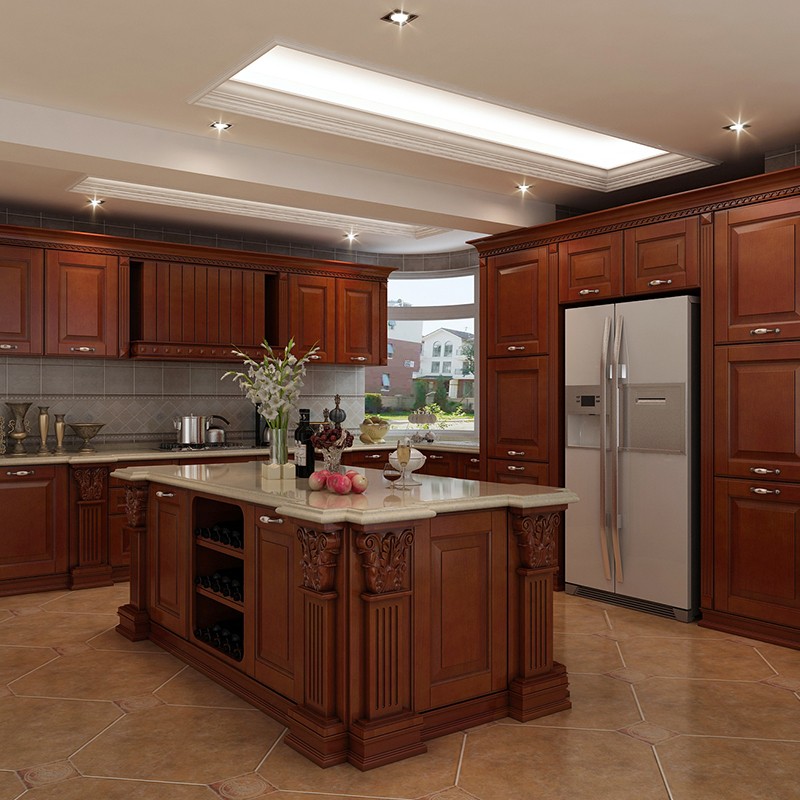
When to replace kitchen cupboards?
Whether kitchen cabinets need to be replaced often depends on many factors such as kitchen usage, the degree of damage to the kitchen cupboards, and budget. The following situations may indicate that it is time to consider replacing kitchen cupboards:
1. Structural damage:
If the structure of the kitchen cabinet door panels, drawers, side panels, etc. is severely damaged, especially if they are deformed or rotten, then replacing the kitchen cabinet may be a more reasonable choice. Structural damage often means that long-term use has caused irreparable damage to the kitchen cupboard.
2. Severe aging of the cabinet surface:
If the surface paint of the kitchen cabinet is peeling, scratched, or can no longer be repaired, it is a good choice to consider replacing the new kitchen cabinet. Surface aging not only affects the appearance, but may also affect the functionality and service life of the kitchen cupboard.
3. The function of the cabinet no longer meets the needs:
As family members change, the storage needs of the kitchen may change. If the storage space of the existing kitchen cupboard can no longer meet the needs, or the design is outdated and no longer meets the needs of modern kitchens, then it is time to consider replacing the kitchen cupboard to adapt to the new lifestyle.
4. The kitchen cabinet is difficult to clean and maintain:
If the stains on the surface of the kitchen cupboards are difficult to remove, or the surface is damaged due to long-term use, making it difficult to clean or worsening the damage, then consider replacing it. For kitchen cabinets that have been repaired many times but still cannot be restored, replacement may be a more economical and sensible choice.

How to extend the service life of kitchen cabinets?
In order to maximize the service life of kitchen cupboards, reasonable maintenance and use are the key:
● Regular cleaning: Wipe the surface of the kitchen cabinet with a damp cloth every day to avoid the accumulation of oil and water stains.
● Avoid humid environment: Try to avoid water droplets and moisture on the surface of the kitchen cabinets and keep the kitchen well ventilated.
● Check the hardware: Regularly check the fastening of hardware such as hinges, pull-out baskets, and slide rails to avoid loosening or damage. 4. Apply protective oil regularly: For wooden kitchen cupboards, you can apply maintenance oil regularly to maintain the gloss and durability of the wood.

